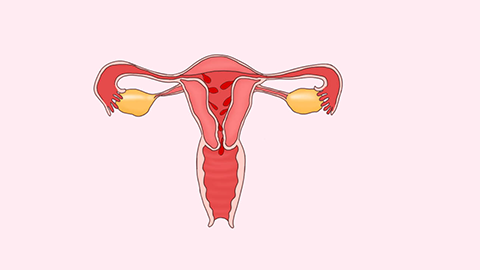What are uterine polyps?
Endometrial polyps are generally referred to as uterine polyps. Under normal circumstances, endometrial polyps may be caused by factors such as excessive estrogen levels, aging, obesity, endometritis, and hypertension. It is recommended to seek timely medical attention, identify the underlying cause, and undergo symptomatic treatment under a doctor's guidance. Detailed analysis is as follows:

1. Excess estrogen: Long-term excessive stimulation of the endometrium by estrogen can lead to localized overgrowth of the endometrial lining, resulting in the formation of polyps. This is commonly seen in women of reproductive age. Adjust your diet accordingly, reduce intake of foods rich in estrogen, maintain regular sleep patterns, avoid staying up late, and keep hormone levels stable.
2. Aging: With increasing age, the endometrial tissue's ability to repair declines, leading to an increased incidence of polyps. These are commonly seen in women over 40 years old. Regular gynecological ultrasound examinations are recommended to monitor changes in polyp size. Maintain healthy lifestyle habits and engage in appropriate physical exercise to improve overall health.
3. Obesity: Increased conversion of estrogen in obese individuals can stimulate endometrial hyperplasia and lead to polyp formation, often accompanied by excessive weight and metabolic abnormalities. Weight control is necessary, including reducing intake of high-fat and high-sugar foods and increasing physical activity. When polyps are large, hysteroscopic polypectomy may be required to remove the polyps and alleviate symptoms.
4. Endometritis: Chronic inflammation that continuously irritates the endometrium can lead to localized tissue hyperplasia and the formation of polyps, often accompanied by increased vaginal discharge and lower abdominal pain. Patients may follow medical advice to use anti-infective medications such as cefixime capsules, metronidazole tablets, and azithromycin dispersible tablets. After inflammation control, recurrence of polyps can be reduced. Personal hygiene should be emphasized during treatment, and unhygienic sexual practices should be avoided.
5. Hypertension: Hypertension may affect the endometrial blood circulation, causing abnormal tissue proliferation and increasing the risk of polyps, often accompanied by symptoms such as dizziness and headaches. Patients should follow medical advice to use antihypertensive medications such as nifedipine sustained-release tablets, irbesartan tablets, and benazepril hydrochloride tablets. Regular blood pressure monitoring is necessary, and a low-salt diet should be maintained.
Menstrual hygiene should be maintained in daily life; excessive fatigue and mental stress should be avoided, and a light diet should be maintained. If polyps cause abnormal bleeding or affect fertility, active cooperation with medical treatment is required. Regular follow-up visits after surgery are necessary to prevent recurrence.




